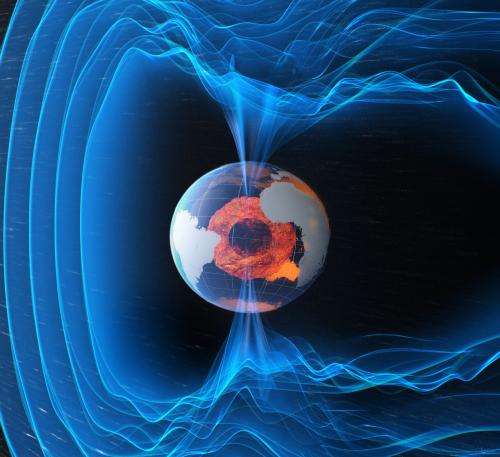ESA SWARMing Earth's magnetic field

ESA's three-satellite Swarm constellation was lofted into a near-polar orbit by a Russian Rockot launcher this afternoon. For four years, it will monitor Earth's magnetic field, from the depth of our planet's core to the heights of its upper atmosphere.
The Swarm satellites will give us unprecedented insights into the complex workings of the magnetic shield that protects our biosphere from charged particles and cosmic radiation. They will perform precise measurements to evaluate its current weakening and understand how it contributes to global change.
The Rockot launcher lifted off from the Plesetsk spaceport in northern Russia at 12:02 GMT (13:02 CET) on 22 November.
Some 91 minutes later, its Breeze-KM upper stage released the three satellites into a near-polar circular orbit at an altitude of 490 km.
Contact was established with the trio minutes later through the Kiruna station in Sweden and the Svalbard station in Norway.
All three satellites are controlled by ESA teams at the European Space Operation Centre in Darmstadt, Germany. In the next hours they will deploy their 4 m-long instrument booms. Over the next three months of commissioning, their scientific payloads will be verified and they will move to their respective operational orbits.
The lower pair will fly in formation side by side, about 150 km (10 seconds) apart at the equator and at an initial altitude of 460 km, while the upper satellite will rise to a higher orbit, at 530 km.
"Swarm is about to fill a gap in our view of the Earth system and in our monitoring of global change issues," noted Volker Liebig, ESA's director for Earth observation.
"It will help us to better understand the field that protects us from the particles and radiation coming from the Sun."
Provided by European Space Agency




















